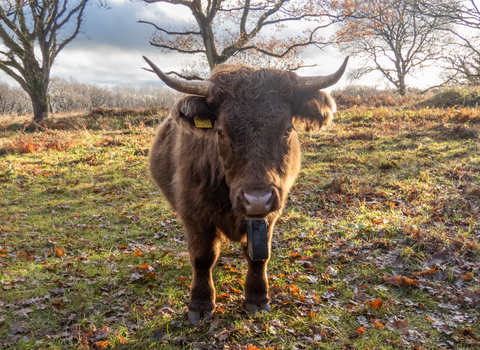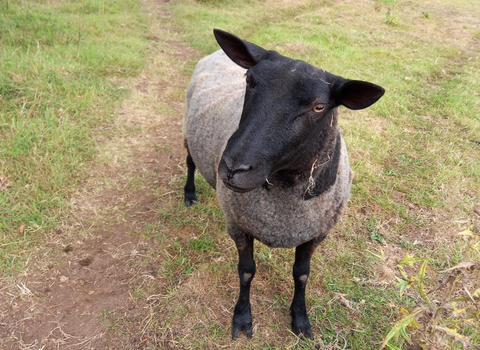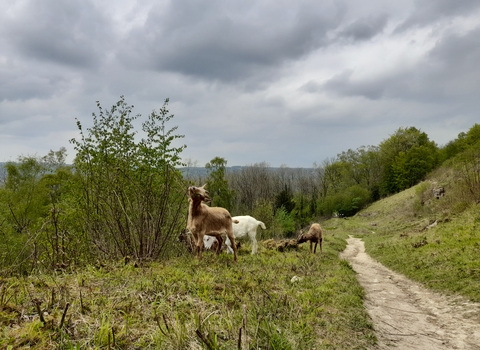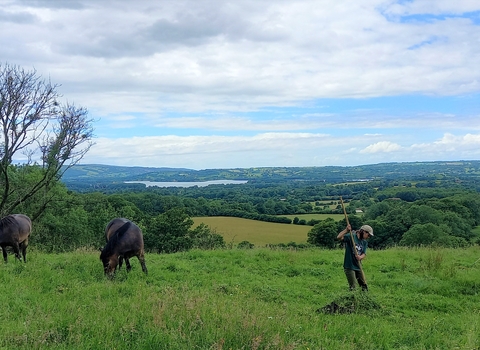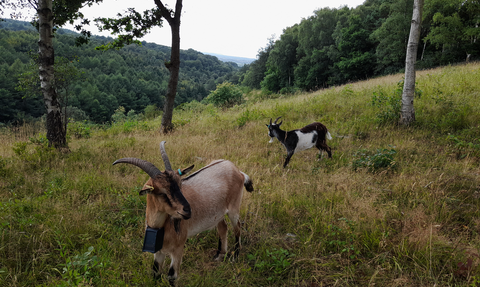
(C) Caitlin Coombs
Conservation grazing
Grazing animals as eco-system engineers
There are a multitude of grazing animal species which help us manage the land across our reserves. Some are owned and looked after by tenant graziers, while others are living wild and are just as appreciated.
From the rabbits at Hellenge Hill and the water voles at Lawrence Weston Moor, to the cattle at Walton Common and the sheep at Dolebury Warren - each species of grazing animal eats vegetation in its own way that creates the niches required by different wildlife. Grazing animals create biodiverse habitat mosaics and helps maintain our reserves in a natural, carbon efficient, wildlife-friendly way.
Meet our four-legged conservation officers
Here are some of the grazing animals you might come across on our reserves, alongside the wild grazers such as rabbits, deer, water voles and even beavers.
Nature helping nature to thrive
Taking advantage of the natural action of grazing animals means that we, as land managers, can reduce the need to use equipment and machinery. This reduces the carbon footprint of our work and saves saves on the expense of purchasing, using and maintaining machinery.
Machinery such as tractors, brushcutters and chainsaws can replicate the action of grazing animals, but generally wouldn’t be able to do as good a job as them. They also wouldn’t be able to replicate the same benefits for nature.
For example, cattle leave tussocks dotted around that can be a valuable overwintering habitat for insects, and their footsteps can create the bare ground required for successful germinating of certain plants. They will also eat the vegetation from above and around an anthill while leaving it largely intact. A piece of cutting machinery on a tractor will generally create quite a uniform finish with no tussocks, minimal bare ground, and flattening anthills.
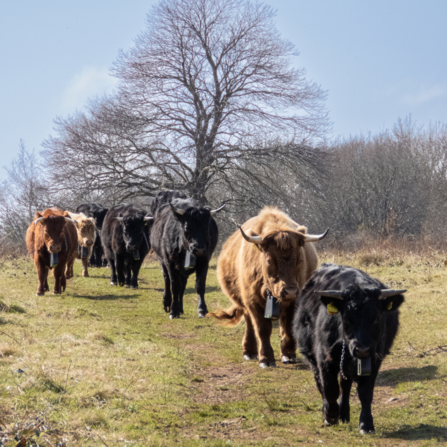
(C) Dave and Carol Horlick
What to do if you see a grazing animals at one of our nature reserves
Please enjoy watching the animals graze
The breeds we have in areas with public access are docile, and they’ve always got plenty to eat. Observe the ways in which the different species forage – the cattle wrapping their tongues around clumps of grasses, or the goats purposely stepping on a bendy branch to bring it down to ground level and then strip it of leaves and bark.
Please don’t feed the grazing animals
Sadly this can lead to bad behaviour, and potentially illness or death. Some animals may get boisterous or pushy around people if they are used to receiving treats from well-meaning visitors. In the case of our Exmoor ponies, if they are over fed on too rich a diet, they could develop a painful and potentially fatal condition called laminitis. You must also keep in mind what food the animals have evolved to eat. Goats’ teeth, for example, are designed for chewing leaf matter and bark, not carrots. If they are unable to chew food into swallowable pieces, they could choke.
Please keep dogs on short leads
Dogs have been known to attack our grazing animals, leading to injuries and death. In some instances, grazing animals have been chased by dogs, which can cause them to have heart attacks, miscarry from stress, panic and break a leg on uneven ground, or even being chased over cliff edges.
Please take any dog poo with you and dispose of it away from the reserve
The bacteria present in dog poo is harmful to other animals, so needs to be completely removed from our site. Waste bags labelled as biodegradable or compostable will only break down in a commercial composting unit, so any left on the ground or hung to a tree branch could remain for years unless removed, and end up choking animals.
A wilder future
If we want to encourage an abundance of wildlife, then that wildlife requires a vast range of niches and habitats. By working with animals to create a mosaic of vegetation and ground conditions, we can help cater for a huge variety of species and support nature’s recovery.
This is a trend we’re seeing across the country, so you can expect to see more species working alongside one another, aided by innovating technology such as GPS collars which show us where the animals have been grazing and help us make sure they don’t stray.
In a world where more native species are able to be reintroduced into the wild, we could also see more uncommon behaviour such as rootling by wild boar, bark rubbing by bison, and coppicing by beavers becoming more prevalent across the UK, creating a vibrant and thriving ecosystem for us all.

